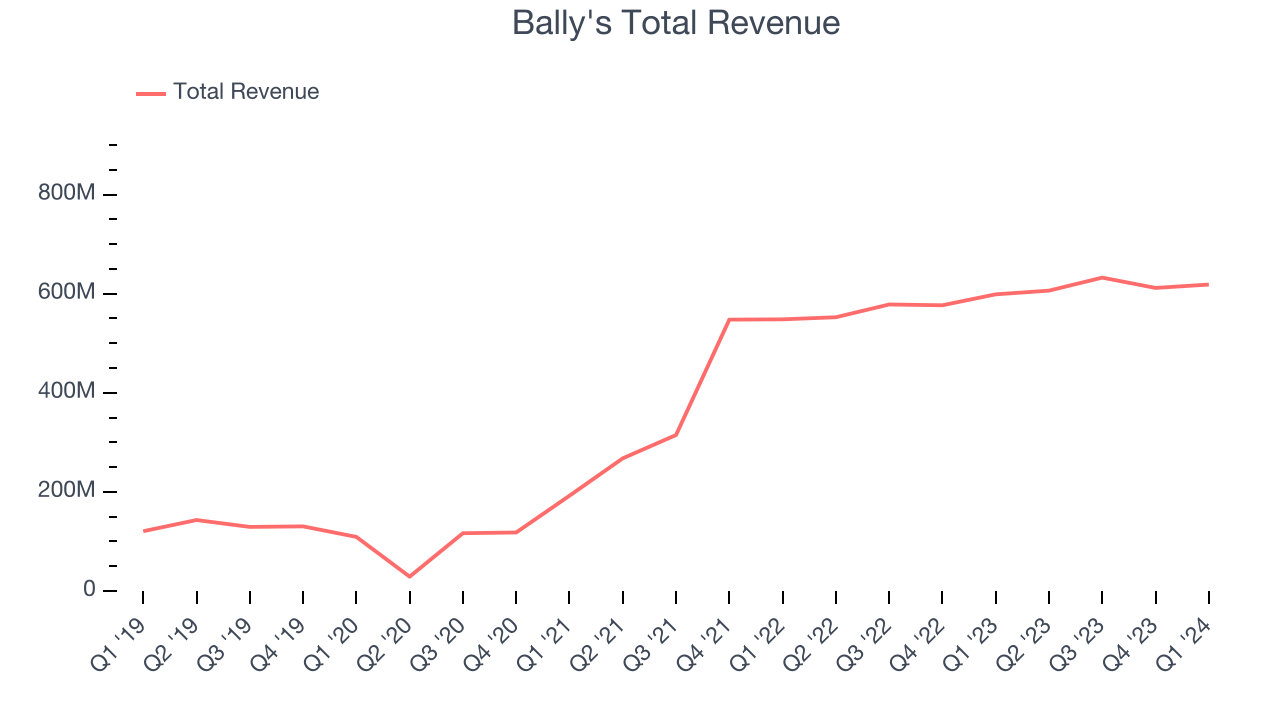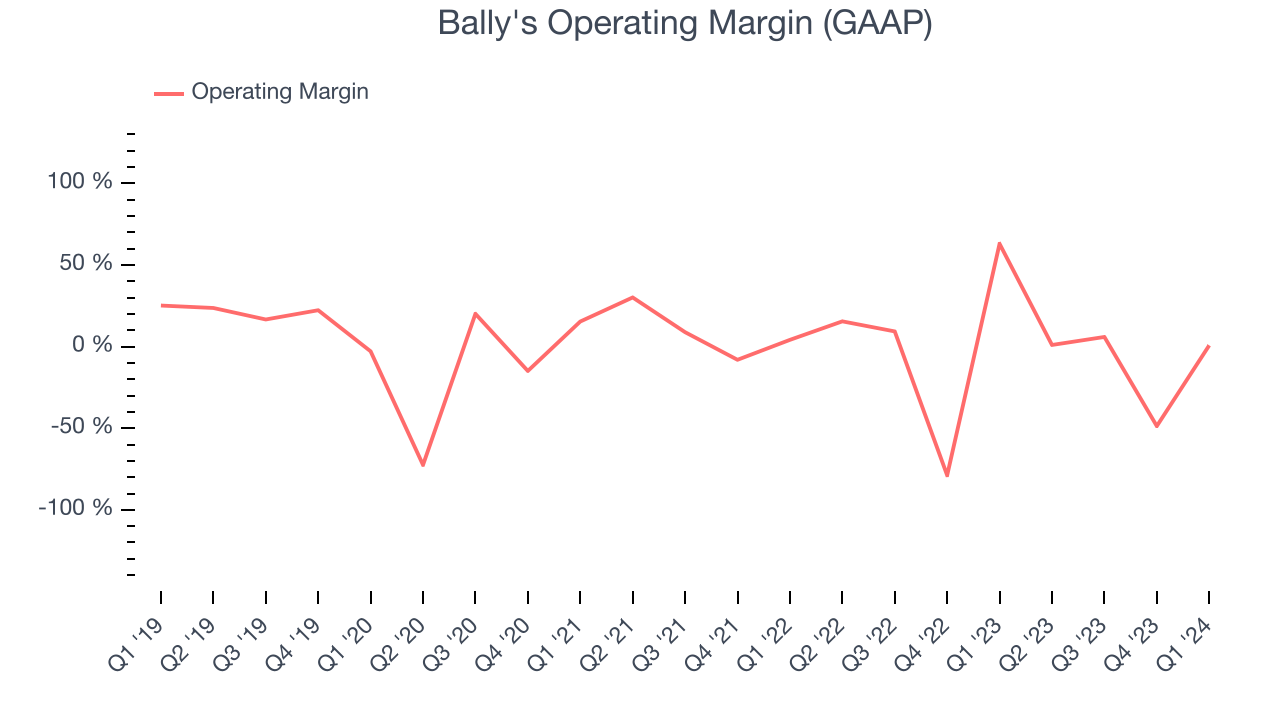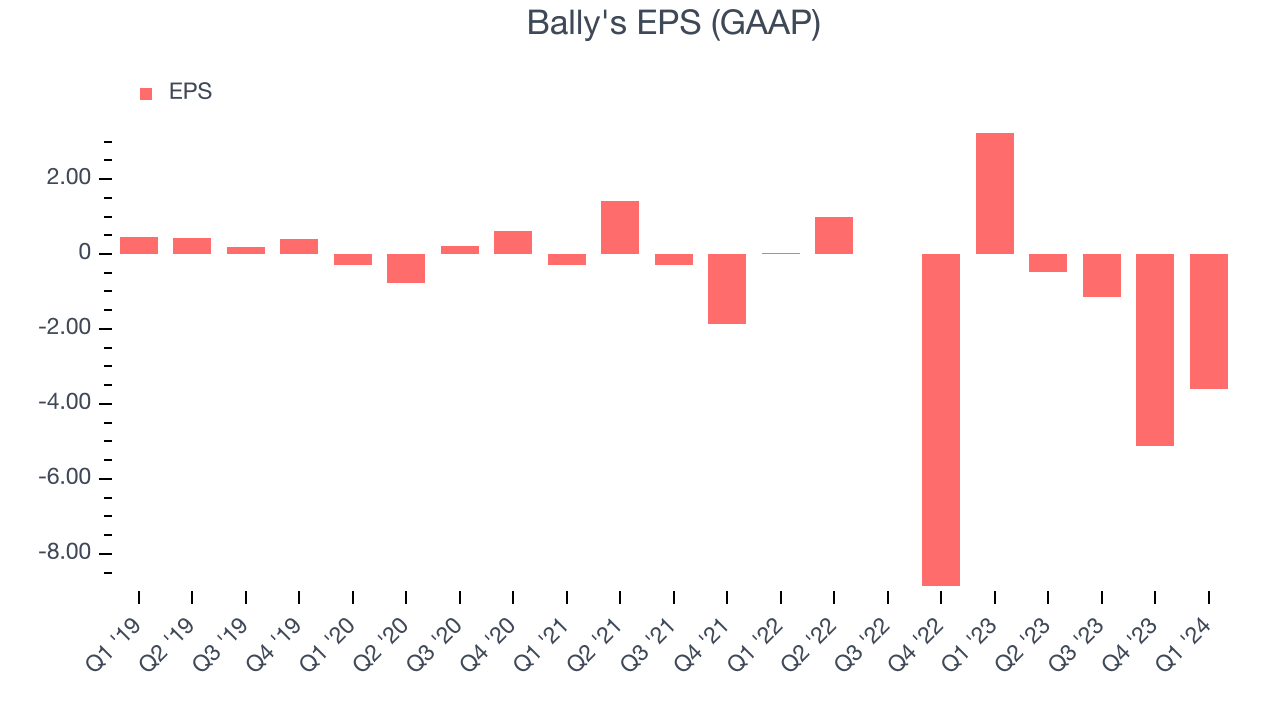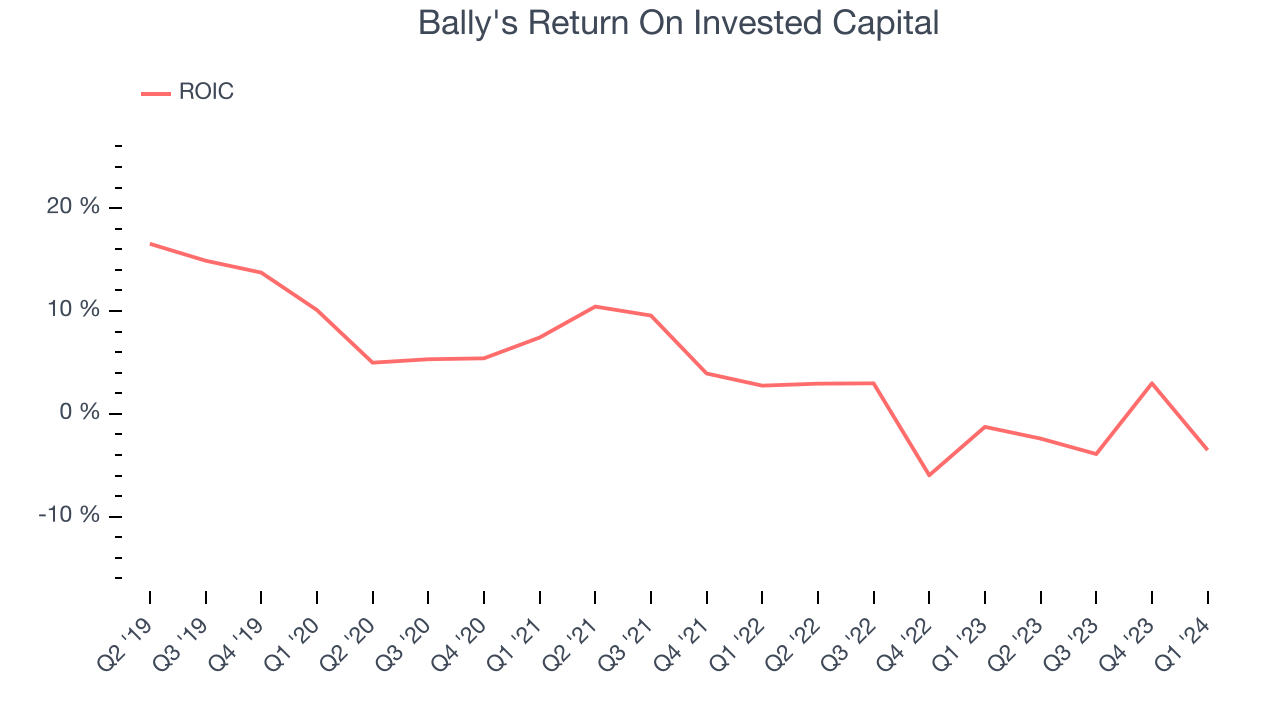Gaming, betting and entertainment company Bally's Corporation (NYSE:BALY) missed analysts' expectations in Q1 CY2024, with revenue up 3.3% year on year to $618.5 million. On the other hand, the company's outlook for the full year was close to analysts' estimates with revenue guided to $2.6 billion at the midpoint. It made a GAAP loss of $3.61 per share, down from its profit of $3.24 per share in the same quarter last year.
Bally's (BALY) Q1 CY2024 Highlights:
- Revenue: $618.5 million vs analyst estimates of $627.3 million (1.4% miss)
- Adjusted EBITDA: $116.5 million vs analyst estimates of $119.9 million (2.8% miss)
- EPS: -$3.61 vs analyst estimates of -$1.08 (-$2.53 miss)
- The company reconfirmed its revenue guidance for the full year of $2.6 billion at the midpoint (also reconfirmed its full year EBITDAR guide)
- Gross Margin (GAAP): 54%, down from 54.9% in the same quarter last year
- Market Capitalization: $531.2 million
Headquartered in Providence, Rhode Island, Bally's Corporation (NYSE:BALY) is a diversified global casino-entertainment company that owns and manages casinos, resorts, and online gaming platforms.
Bally's Corporation provides a wide range of services and products, primarily centered around casino gaming. This includes a variety of slot machines and table games along with digital gaming and sports betting platforms. The company also offers non-gaming amenities such as hotel accommodations, dining experiences, live entertainment, and recreational facilities. Its offerings seek to provide a comprehensive entertainment experience, catering to both gaming enthusiasts and casual visitors.
The company's revenue streams are diversified across different channels. These include earnings from casino operations, hotel accommodations, food and beverage services, and online gaming platforms. Bally's business model is built on a mix of direct revenue generation from its properties and partnerships in the digital gaming sectors.
Casino Operator
Casino operators enjoy limited competition because gambling is a highly regulated industry. These companies can also enjoy healthy margins and profits. Have you ever heard the phrase ‘the house always wins’? Regulation cuts both ways, however, and casinos may face stroke-of-the-pen risk that suddenly limits what they can or can't do and where they can do it. Furthermore, digitization is changing the game, pun intended. Whether it’s online poker or sports betting on your smartphone, innovation is forcing these players to adapt to changing consumer preferences, such as being able to wager anywhere on demand.
Competitors operating in the casino-entertainment sector include Caesars Entertainment (NASDAQ:CZR), MGM Resorts (NYSE:MGM), and Wynn Resorts (NASDAQ:WYNN).Sales Growth
A company's long-term performance can indicate its business quality. Any business can enjoy short-lived success, but best-in-class ones sustain growth over many years. Bally's annualized revenue growth rate of 40.3% over the last five years was incredible for a consumer discretionary business.  Within consumer discretionary, product cycles are short and revenue can be hit-driven due to rapidly changing trends. That's why we also follow short-term performance. Bally's recent history shows its momentum has slowed as its annualized revenue growth of 21.3% over the last two years is below its five-year trend.
Within consumer discretionary, product cycles are short and revenue can be hit-driven due to rapidly changing trends. That's why we also follow short-term performance. Bally's recent history shows its momentum has slowed as its annualized revenue growth of 21.3% over the last two years is below its five-year trend.
This quarter, Bally's revenue grew 3.3% year on year to $618.5 million, falling short of Wall Street's estimates. Looking ahead, Wall Street expects sales to grow 5.9% over the next 12 months, an acceleration from this quarter.
Operating Margin
Operating margin is a key measure of profitability. Think of it as net income–the bottom line–excluding the impact of taxes and interest on debt, which are less connected to business fundamentals.
Although Bally's was profitable this quarter from an operational perspective, it's generally struggled when zooming out. Its high expenses have contributed to an average operating margin of negative 4% over the last two years. This performance isn't ideal as demand in the consumer discretionary sector is volatile. We prefer to invest in companies that can weather industry downturns through consistent profitability.
In Q1, Bally's generated an operating profit margin of 0.7%, down 62.2 percentage points year on year.
Over the next 12 months, Wall Street expects Bally's to become profitable. Analysts are expecting the company’s LTM operating margin of negative 10.1% to rise to positive 5.7%.EPS
We track long-term historical earnings per share (EPS) growth for the same reason as long-term revenue growth. Compared to revenue, however, EPS highlights whether a company's growth was profitable. 
Over the last five years, Bally's EPS dropped 609%, translating into 48% annualized declines. We tend to steer our readers away from companies with falling EPS, where diminishing earnings could imply changing secular trends or consumer preferences. Consumer discretionary companies are particularly exposed to this, leaving a low margin of safety around the company (making the stock susceptible to large downward swings).
In Q1, Bally's reported EPS at negative $3.61, down from $3.24 in the same quarter last year. This print unfortunately missed analysts' estimates. Over the next 12 months, Wall Street expects Bally's to improve its earnings losses. Analysts are projecting its LTM EPS of negative $10.35 to advance to negative $2.95.
Return on Invested Capital (ROIC)
EPS and free cash flow tell us whether a company was profitable while growing revenue. But was it capital-efficient? A company’s ROIC explains this by showing how much operating profit a company makes compared to how much money the business raised (debt and equity).
Bally's five-year average return on invested capital was 3.1%, somewhat low compared to the best consumer discretionary companies that pump out 25%+. Its returns suggest it historically did a subpar job investing in profitable business initiatives.

The trend in its ROIC, however, is often what surprises the market and drives the stock price. Unfortunately, Bally's ROIC averaged 11.2 percentage point decreases over the last few years. Paired with its already low returns, these declines suggest the company's profitable business opportunities are few and far between.
Balance Sheet Risk
Debt is a tool that can boost company returns but presents risks if used irresponsibly.
Bally's $3.68 billion of debt exceeds the $169.4 million of cash on its balance sheet. Furthermore, its 7x net-debt-to-EBITDA ratio (based on its EBITDA of $517.4 million over the last 12 months) shows the company is overleveraged.
At this level of debt, incremental borrowing becomes increasingly expensive and credit agencies could downgrade the company’s rating if profitability falls. Bally's could also be backed into a corner if the market turns unexpectedly – a situation we seek to avoid as investors in high-quality companies.
We hope Bally's can improve its balance sheet and remain cautious until it increases its profitability or reduces its debt.
Key Takeaways from Bally's Q1 Results
It was encouraging to see Bally's maintain its full-year revenue and adjusted EBITDA guidance. On the other hand, its revenue, adjusted EBITDA, and EPS all missed Wall Street's estimates. Overall, this was a bad quarter for Bally's, and there could be questions about why guidance was not lowered despite the miss across the board this quarter. The company is down 7.7% on the results and currently trades at $12.16 per share.
Is Now The Time?
Bally's may have had a tough quarter, but investors should also consider its valuation and business qualities when assessing the investment opportunity.
We cheer for all companies serving consumers, but in the case of Bally's, we'll be cheering from the sidelines. Although its revenue growth has been exceptional over the last five years, its declining EPS over the last five years makes it hard to trust. And while its projected EPS for the next year implies the company's fundamentals will improve, the downside is its relatively low ROIC suggests it has historically struggled to find compelling business opportunities.
While there are some things to like about Bally's and its valuation is reasonable, we think there are better opportunities elsewhere in the market right now.
Wall Street analysts covering the company had a one-year price target of $11.95 per share right before these results (compared to the current share price of $12.16).
To get the best start with StockStory, check out our most recent stock picks, and then sign up for our earnings alerts by adding companies to your watchlist here. We typically have the quarterly earnings results analyzed within seconds of the data being released, and especially for companies reporting pre-market, this often gives investors the chance to react to the results before the market has fully absorbed the information.
